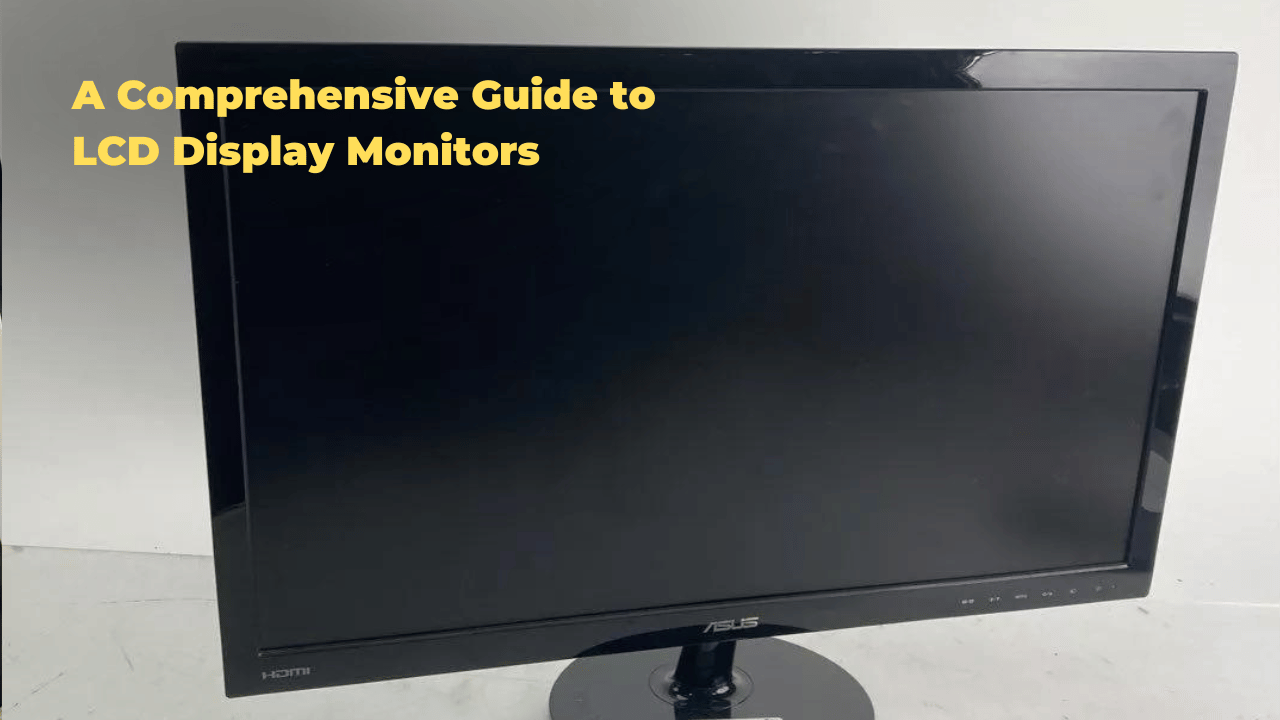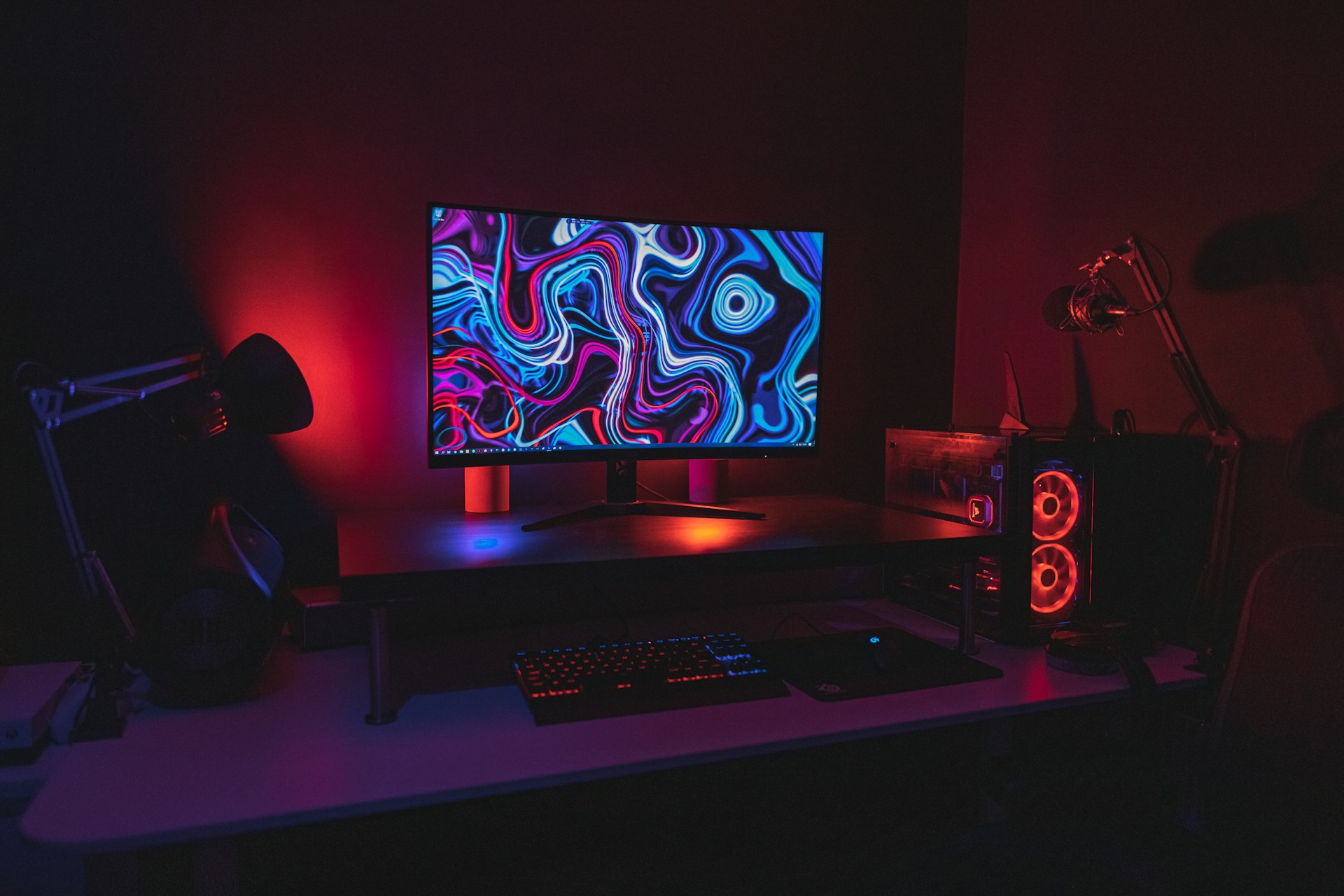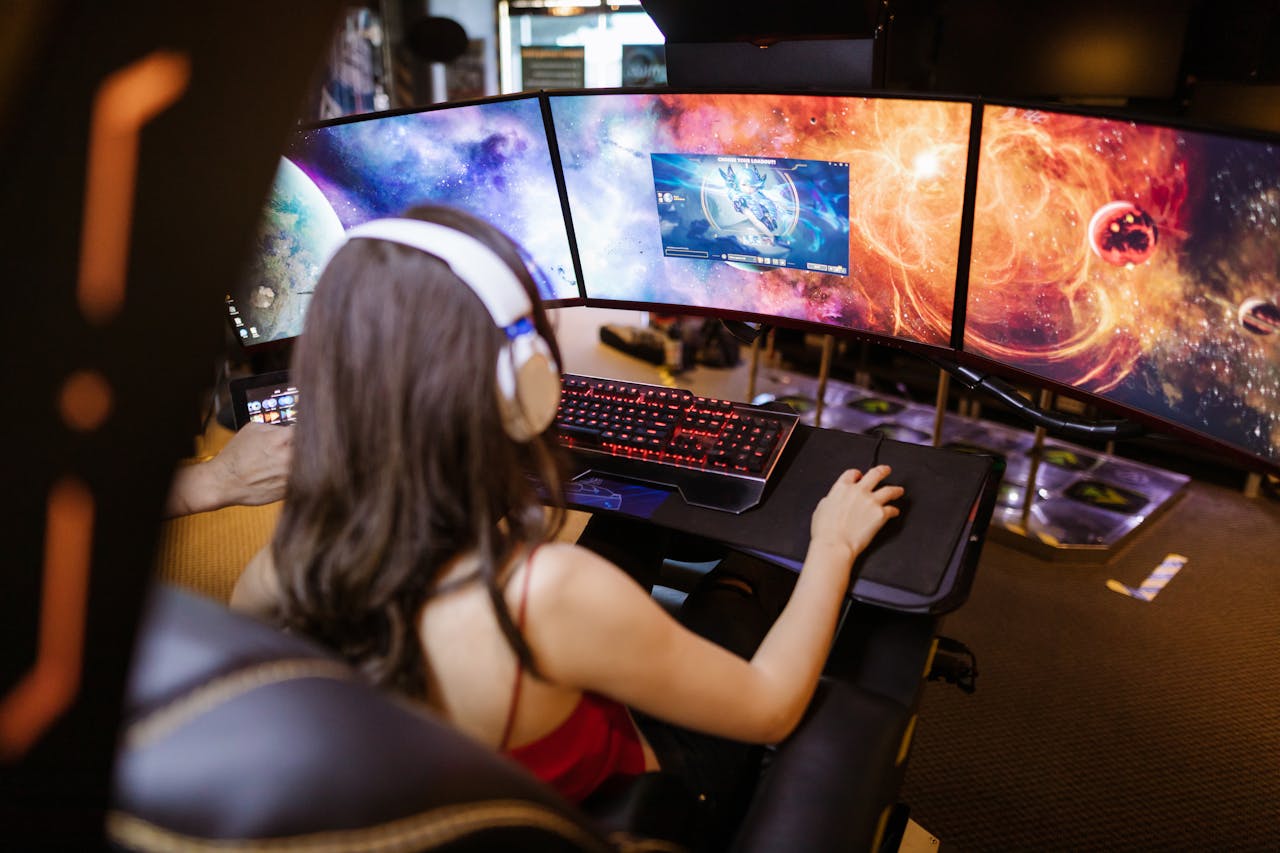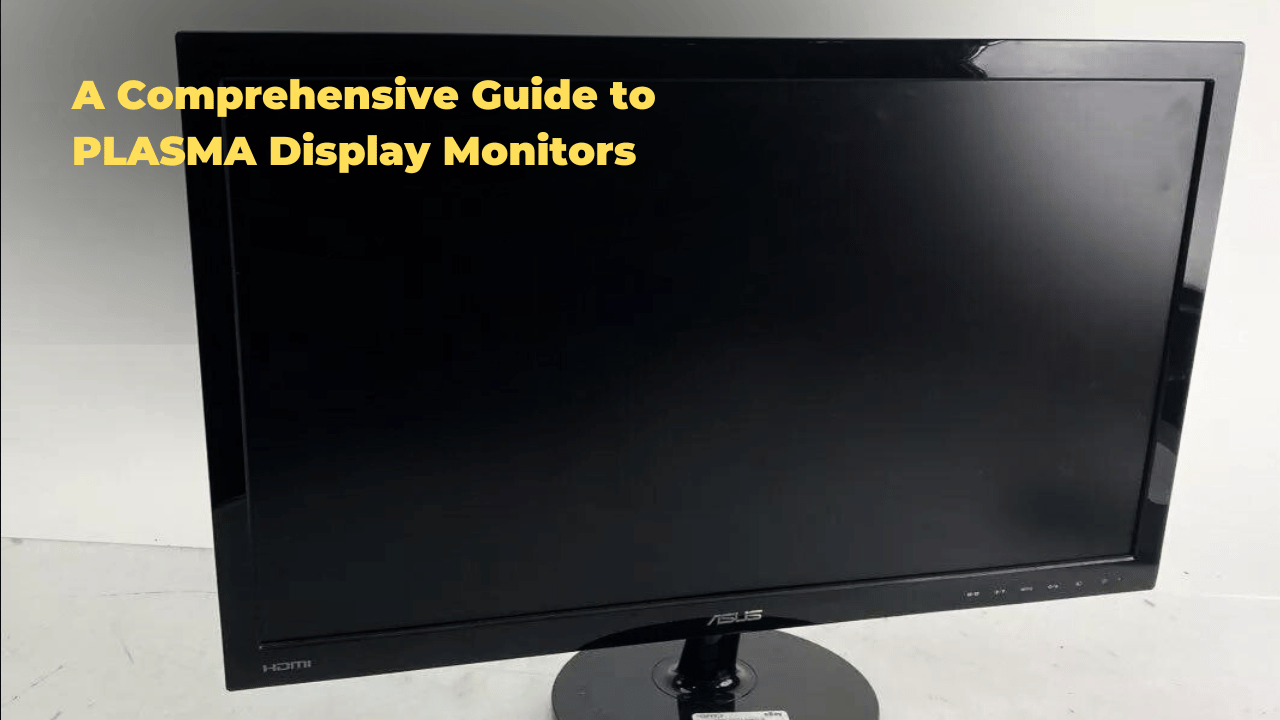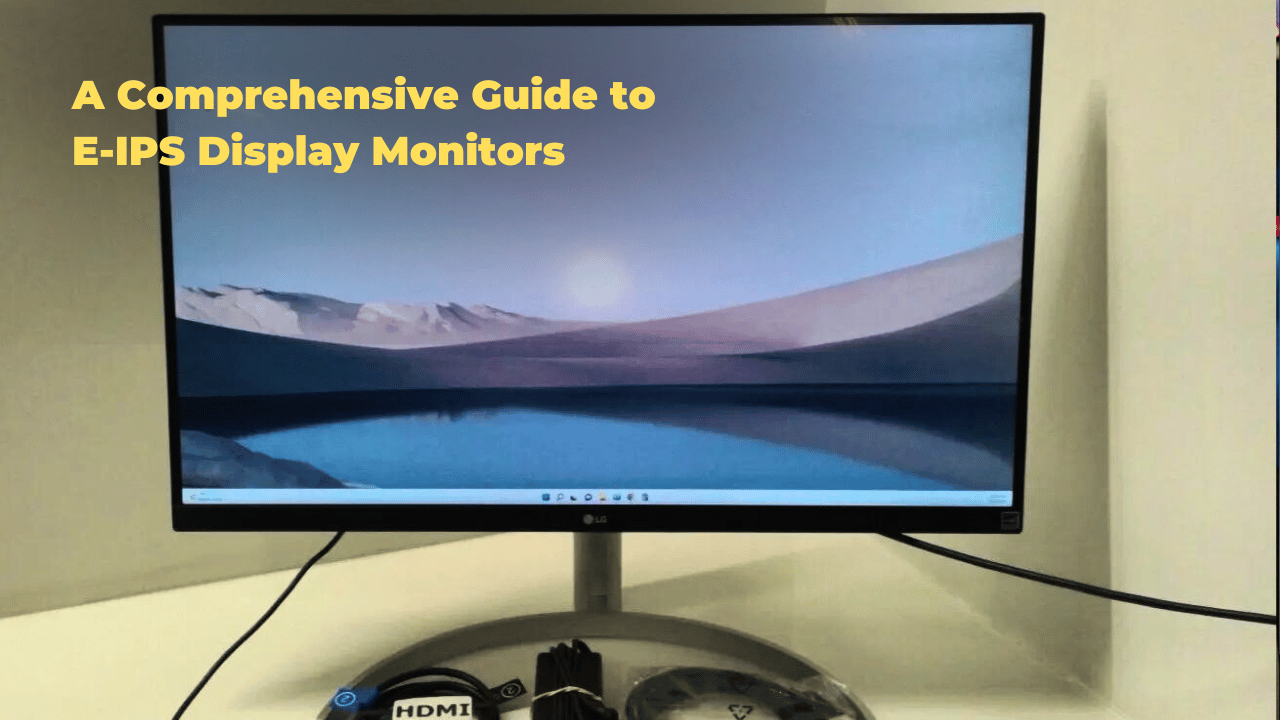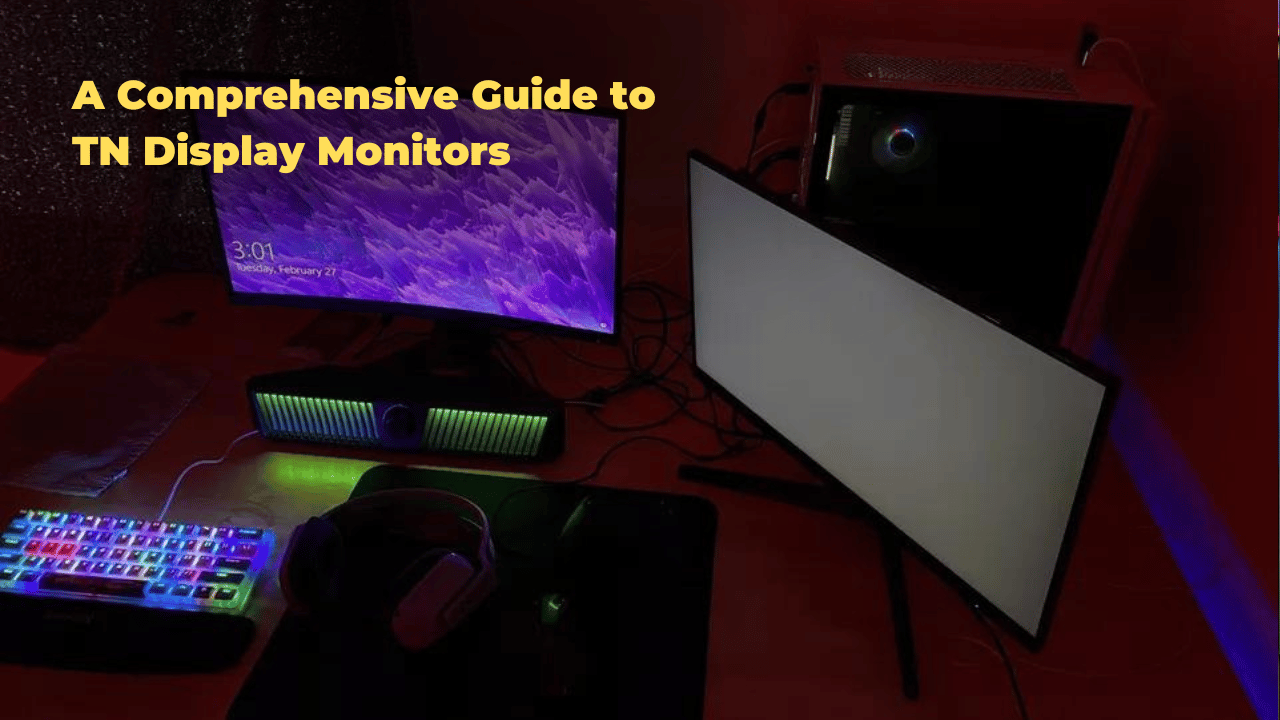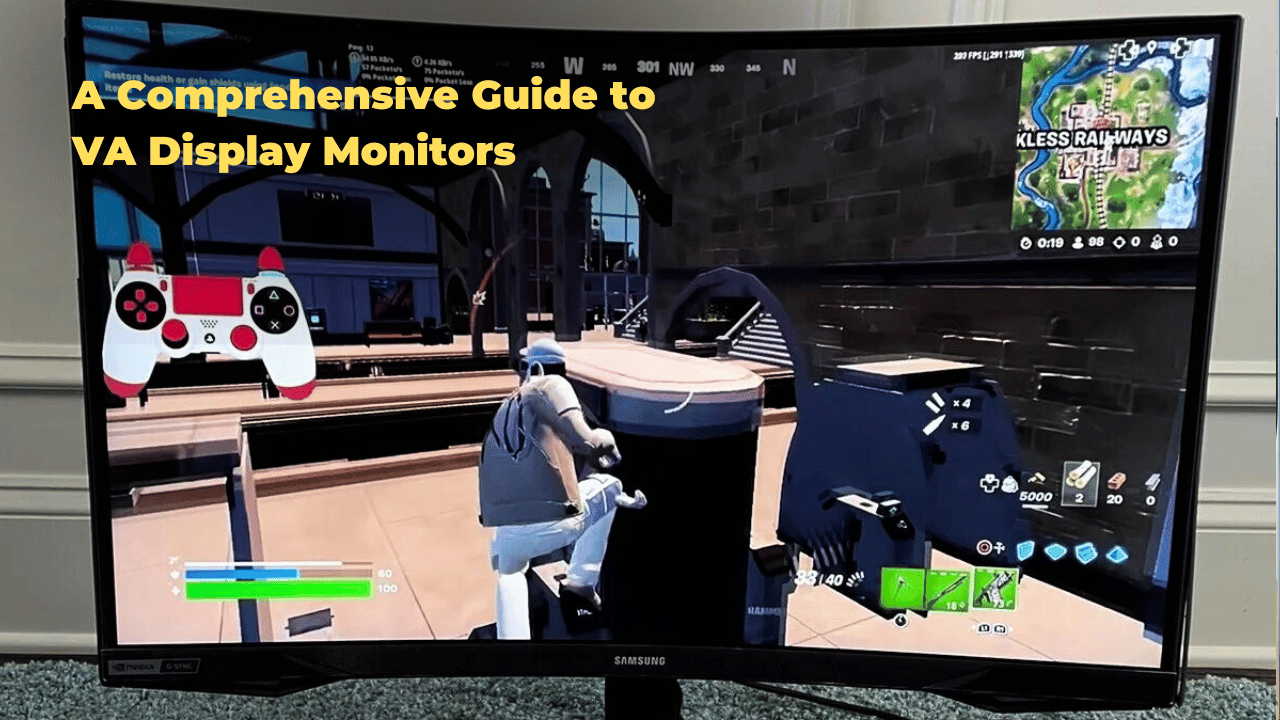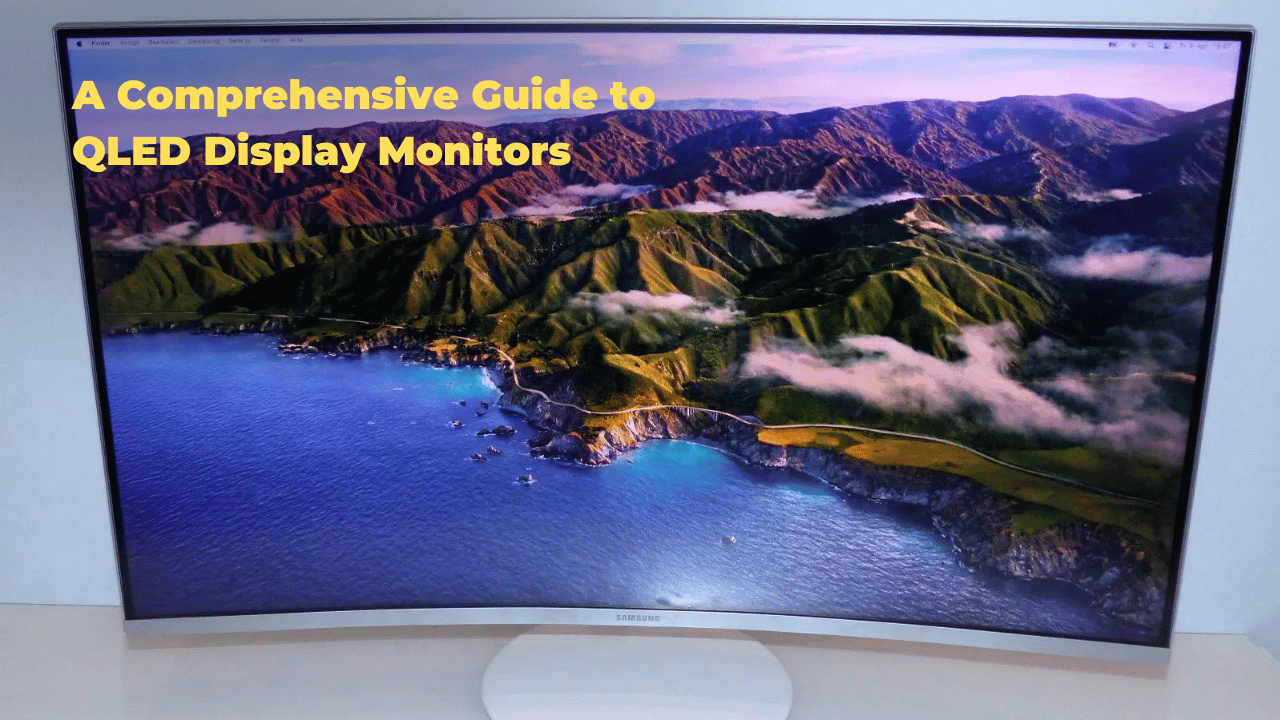LCD display monitors have become the preferred choice for professionals and consumers due to their exceptional image quality, versatility, and range of features. These monitors utilize liquid crystals to control light passing through pixels, offering high color accuracy and pixel density.
They are suitable for various applications, including gaming, video editing, and graphic design, and come in various sizes and resolutions. With advanced connectivity options, built-in features, and precise control of light and liquid crystals, LCD monitors provide crisp and clear images. As you explore the world of LCD display monitors, you’ll discover how to optimize their performance and select the ideal one for your specific needs.
Key Takeaways
- Accurate Images: LCD monitors use liquid crystals to control light, offering high color accuracy and pixel density for detailed images.
- Monitors with LCD display: Asus VS247H, Samsung S24F350, LG 27MK600M
- Gaming and Professional Use: Suitable for gaming, video editing, and graphic design, LCD monitors provide precise control of light and liquid crystals for high-quality images.
- Connectivity Options: Common display interface options include HDMI, VGA, and DisplayPort, with HDMI 2.0 recommended for gaming consoles and modern computers.
- Enhanced User Experience: Additional features like built-in speakers, webcam, and USB hubs enhance user experience.
- Monitor Longevity: Gentle cleaning and regular updates ensure monitor longevity.
- Choosing the Right Monitor: Consider screen technologies, ergonomic design features, connectivity options, and specific requirements for gaming and professional use when selecting an LCD monitor.
- Screen Technologies: Look for IPS, TN, VA, or OLED panels to suit your specific needs.
- Ergonomic Design: Adjustability, tilt, and swivel features promote comfortable viewing and reduce eye strain.
- Connectivity and Compatibility: Ensure the monitor is compatible with your devices and has the necessary ports for seamless connection.
- Budget and Requirements: Balance budget with requirements for resolution, refresh rate, and response time to find the ideal LCD monitor for your needs.
How LCD Display Monitors Work
Principle of Operation
LCD display monitors operate by using a layer of liquid crystals to block or allow light to pass through a matrix of pixels, creating images on the screen. This technology enables LCD monitors to produce high-quality images with precise color accuracy and high pixel density.
Screen Construction
The screen construction of an LCD monitor consists of several layers, including a backlight, a polarizing filter, and a layer of liquid crystals. The backlight emits white light, which then passes through the polarizing filter, aligning the light waves in a specific direction. The liquid crystals, controlled by an electric current, block or allow the light to pass through the pixels, creating the desired image.
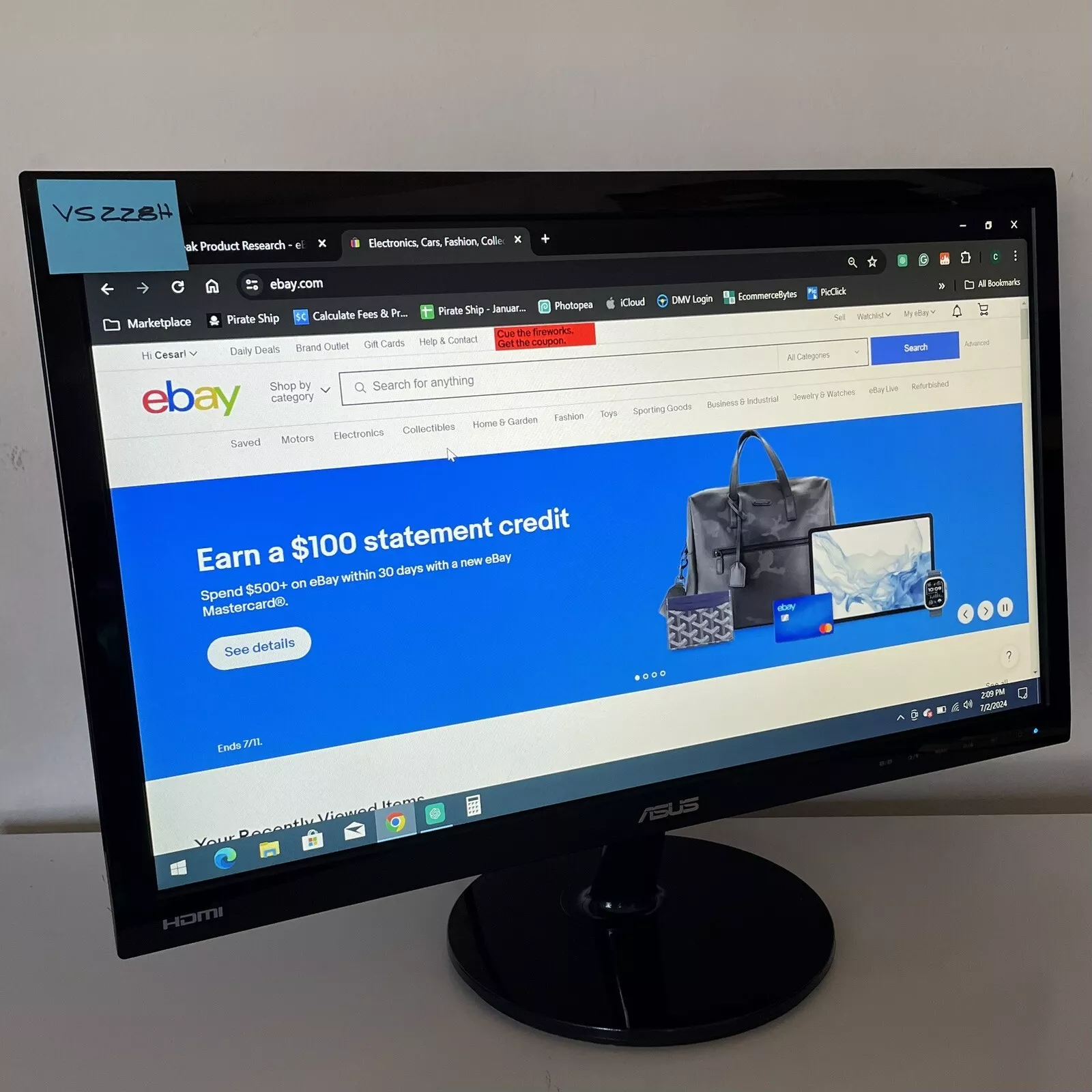
Color Accuracy and Pixel Density
The display technologies used in LCD monitors allow for a high level of color accuracy, with the ability to produce a wide range of colors and shades. Additionally, the pixel density of LCD monitors is typically high, resulting in crisp and clear images.
Applications and Benefits
The combination of these features enables LCD monitors to produce detailed and vibrant images, making them suitable for a variety of applications, including gaming, video editing, and graphic design. Overall, the precise control of light and liquid crystals in LCD monitors enables the production of high-quality images with excellent color accuracy and pixel density.
Key Features and Advantages
| Feature | Advantage |
|---|---|
| High color accuracy | Produces a wide range of colors and shades |
| High pixel density | Results in crisp and clear images |
| Precise control of light and liquid crystals | Enables production of high-quality images |
Benefits of Using LCD Monitors
Eco-Friendly and Cost-Effective: Energy Efficiency
LCD monitors consume significantly less power compared to traditional CRT monitors, making them an ideal choice for individuals and organizations seeking to reduce their carbon footprint and energy costs.
Enhanced Visual Comfort: Reduced Eye Strain
LCD monitors emit less blue light and have a lower refresh rate, reducing eye strain and fatigue. This makes them an excellent choice for professionals and individuals who spend extended periods in front of a screen.
Improved Productivity: Space-Saving Design
LCD monitors boast a sleek design that takes up less space, allowing for a more organized and clutter-free workspace. This, in turn, enhances productivity and overall work experience.
Vibrant Colors and Crisp Images: Enhanced Viewing Experience
LCD monitors are capable of producing vibrant colors and crisp images, making them an excellent choice for professionals who require accurate color representation, such as graphic designers and photographers.
Addressing Concerns: Eye Care and Color Accuracy
LCD monitors address potential user concerns regarding eye care and color accuracy, making them a reliable choice for individuals and organizations seeking to enhance their overall viewing experience.
Types of LCD Display Panels
LCD display panels are categorized into several types, each offering distinct characteristics that cater to specific user needs and preferences. The primary classification of LCD panels is based on the panel technology used, which greatly impacts display quality.
TN Panels: Affordable and Fast
TN (Twisted Nematic) panels are the most affordable and widely used, offering fast response times and low power consumption. However, they often compromise on color accuracy and viewing angles.
IPS Panels: Color Accuracy and Wide Viewing Angles
IPS (In-Plane Switching) panels provide excellent color accuracy, wide viewing angles, and good brightness levels, making them ideal for graphic designers and professionals.
VA Panels: Better Contrast and Deeper Blacks
VA (Vertical Alignment) panels offer better contrast ratios and deeper blacks, but may suffer from slower response times.
Screen Size and Color Accuracy Considerations
When choosing an LCD display panel, screen size is also an essential consideration. Larger screens can enhance the viewing experience, but may compromise on portability and power efficiency.
| Screen Size | Viewing Experience | Portability | Power Efficiency |
|---|---|---|---|
| Larger | Enhanced | Compromised | Compromised |
| Smaller | Limited | Better | Better |
Additionally, color accuracy is a critical factor, particularly for professionals who require precise color representation.
OLED Panels: Exceptional Color Accuracy and Contrast
OLED (Organic Light-Emitting Diode) panels offer exceptional color accuracy, infinite contrast ratios, and fast response times, but are generally more expensive.
Choosing the Right LCD Panel for Your Needs
Ultimately, the choice of LCD panel type depends on individual priorities and requirements. By understanding the strengths and weaknesses of each panel technology, users can make an informed decision to optimize their viewing experience.
Potential User Concerns
- Compromising on color accuracy and viewing angles with TN panels
- Higher cost of OLED panels
- Balancing screen size with portability and power efficiency
LCD Monitor Size and Resolution
Monitor size has a significant effect on the overall user experience. A larger monitor provides more screen space, enabling users to multitask with ease and enjoy an immersive experience. However, it also increases desk space requirements and may lead to a higher cost. On the other hand, a smaller monitor is more space-efficient and budget-friendly but may compromise on multitasking capabilities. Aspect ratio comparison is also vital, with popular options including 16:9, 16:10, and 4:3.
Resolution Clarity: A Key Factor in Image Quality
Resolution clarity is another important factor, as it directly affects image quality. Common resolutions include HD (1366×768), Full HD (1920×1080), and 4K (3840×2160). A higher resolution provides sharper images and more detailed text, making it ideal for tasks that require precision, such as graphic design and gaming.
Determining the Ideal Monitor Size and Resolution for Your Needs
Display size recommendation depends on the intended use and viewing distance. For general use, a 24-inch Full HD monitor is a popular choice. However, for gaming or professional applications, a larger, higher-resolution monitor may be necessary.
| Monitor Size | Resolution | Ideal Use |
|---|---|---|
| 24-inch | Full HD (1920×1080) | General use |
| 27-inch | 4K (3840×2160) | Gaming, professional applications |
Connectivity Options and Features
Display Interface Options: HDMI, VGA, and DisplayPort
A modern LCD display monitor should offer a range of connectivity options to accommodate different devices and applications. The most common display interface options include HDMI, VGA, and DisplayPort. Among these, HDMI 2.0 has become the standard for high-definition video transmission, offering faster data transfer rates and higher video quality compared to VGA.
Choosing Between HDMI and VGA: Consider Your Devices
When deciding between HDMI and VGA connectivity, consider the type of devices you plan to connect to your monitor. HDMI is ideal for gaming consoles, Blu-ray players, and modern computers, while VGA is better suited for older devices and legacy systems.
DisplayPort Compatibility for Multiple Monitor Setups
DisplayPort compatibility is crucial, especially for professionals who require multiple monitor setups. Look for monitors with DisplayPort 1.4 or higher for seamless connectivity and higher bandwidth.
Additional Features for Enhanced Productivity and Convenience
Other features to consider when selecting an LCD display monitor include:
| Feature | Benefit |
|---|---|
| Built-in speakers | Enhanced audio experience |
| Webcam | Convenience for video conferencing |
| USB hubs | Easy connectivity for peripherals |
These features can enhance productivity and convenience, especially in business and gaming applications.
Advanced Features for Specific Needs
Some monitors may offer advanced features like:
- Wireless connectivity for easy setup and minimal clutter
- Touch functionality for interactive presentations
- Ergonomic design for comfortable viewing and reduced eye strain
Ultimately, the right connectivity options and features will depend on your specific needs and preferences.
LCD Display Monitor Maintenance
Cleaning and Maintenance Strategies
Regular cleaning is crucial to prevent dust and dirt accumulation, which can affect the display’s brightness and overall image quality. Adopt a routine maintenance schedule that includes:
- Gentle Cleaning Techniques: Use soft cloths and gentle cleaning solutions to wipe down the screen, avoiding harsh chemicals or abrasive materials that may damage the LCD panel.
- Exterior and Vent Maintenance: Clean the monitor’s exterior and vents to maintain airflow and prevent overheating.
Troubleshooting and Error Resolution
Identifying and addressing common issues promptly can prevent minor problems from escalating into major ones. Troubleshooting tips include:
- Display Settings and Configuration: Check the display settings to ensure optimal performance.
- Driver Updates and Firmware Maintenance: Regularly update drivers and firmware to resolve compatibility issues and improve overall performance.
- Cable Connection and Signal Integrity: Ensure correct cable connections to maintain signal integrity.
Software and Firmware Updates
Regularly updating firmware and software can help resolve compatibility issues and improve overall performance. Stay up-to-date with the latest updates to ensure:
- Compatibility and Interoperability: Ensure seamless integration with other devices and systems.
- Performance Optimization: Improve display performance and responsiveness.
- Bug Fixes and Security Patches: Address security vulnerabilities and fix bugs.
Preventative Measures and Best Practices
Adopt preventative measures and best practices to extend the lifespan of your LCD display monitor, including:
- Regular Inspections and Maintenance: Schedule regular inspections and maintenance to identify and address potential issues.
- Proper Storage and Handling: Handle the monitor with care, and store it in a clean and dry environment.
Choosing the Right LCD Monitor
Screen Technologies: Understanding the Options
When choosing an LCD monitor, consider the screen technologies available, such as TN (Twisted Nematic), IPS (In-Plane Switching), VA (Vertical Alignment), and OLED (Organic Light-Emitting Diode). Each technology offers unique advantages, including enhanced color accuracy, contrast ratio, and viewing angles. For example, IPS panels are ideal for color-critical applications, while VA panels offer superior contrast and deeper blacks.
Ergonomic Design: Comfort and Productivity
Look for monitors with adjustable height, tilt, and swivel features to guarantee comfortable viewing and reduce eye strain. A well-designed ergonomic monitor can boost productivity and overall user experience.
Connectivity Options: Seamless Device Integration
Evaluate the monitor’s connectivity options, such as HDMI, DisplayPort, and USB ports, to ensure smooth connectivity with your devices. Consider the types of devices you’ll be connecting to your monitor and choose a model that meets your needs.
Gaming and Professional Requirements
If you’re a gamer, prioritize monitors with high refresh rates, fast response times, and low input lag for optimal gaming performance. For professionals, color accuracy and color gamut are crucial for precise color representation.
Choosing the Right Monitor for Your Application
By carefully assessing your specific requirements and considering factors such as screen technology, ergonomic design, connectivity options, and gaming or professional needs, you can select an LCD monitor that enhances your overall viewing experience.
Frequently Asked Questions
Can I Use an LCD Monitor in a High-Humidity Environment?
In high-humidity environments, LCD monitors can be used with caution, as excessive moisture can compromise humidity resistance, potentially impacting durability and affecting the LCD display’s performance and lifespan.
Are LCD Monitors Suitable for Gaming and Video Editing?
Did you know that 70% of gamers prioritize display performance? LCD monitors excel in gaming and video editing with fast response times, high resolutions, and refresh rates up to 240Hz, ensuring crisp visuals and accurate color representation.
Do LCD Monitors Emit Blue Light That Harms the Eyes?
LCD monitors do emit blue light, which can cause eye strain and disrupt sleep patterns. Prolonged screen time can worsen the issue. However, many modern LCDs come equipped with built-in blue light filters to reduce these negative effects.
Can I Repair an LCD Monitor Myself if It’s Damaged?
When considering DIY repair of a damaged LCD monitor, weighing the risks and benefits is crucial. Start by troubleshooting common issues, then assess your technical skills and availability of replacement parts before attempting DIY repair.
Are LCD Monitors Compatible With Old VGA Video Cards?
Debunking the myth: most modern LCD monitors are indeed compatible with old VGA video cards, but VGA’s limited resolution and refresh rates may compromise monitor resolution, refresh rates, and color accuracy, necessitating adapter or upgrade consideration.
Conclusion
As the demand for energy-efficient and high-performance displays continues to rise, the LCD display market is expected to reach new heights. With a vast range of LCD monitors available, it’s essential to understand the key features and benefits to make an informed purchase decision. Consider your specific needs and preferences when choosing an LCD monitor, and don’t forget to maintain your device to ensure optimal performance. What’s your experience with LCD monitors? Share your thoughts in the comments below!


